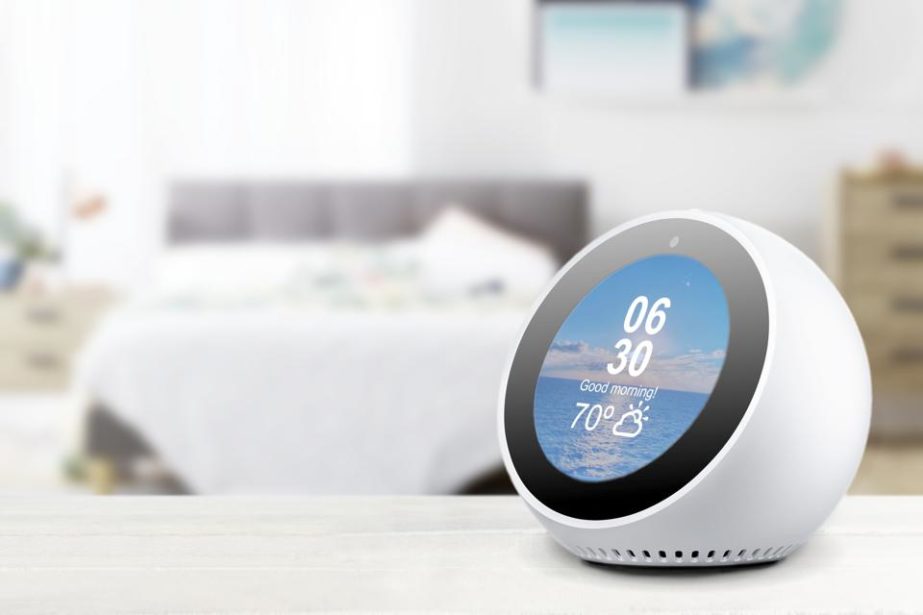When you hear news about artificial intelligence (AI), it might be easy to assume it has nothing to do with you. You might imagine that artificial intelligence is only something the big tech giants are focused on, and that AI doesn’t impact your everyday life. In reality, artificial intelligence is encountered by most people from morning until night. Here are 10 of the best examples of how AI is already used in our everyday lives.
1. Open your phone with face ID
One of the first things many people do each morning is to reach for their smartphones. And, when your device gets unlocked using biometrics such as with face ID, it’s using artificial intelligence to enable that functionality. Apple’s FaceID can see in 3D. It lights up your face and places 30,000 invisible infrared dots on it and captures an image. It then uses machine learning algorithms to compare the scan of your face with what it has stored about your face to determine if the person trying to unlock the phone is you or not. Apple states the chance of fooling FaceID is one in a million.
2. Social media
After unlocking their phones, what’s next? Many people check out their social media accounts, including Facebook, Twitter, Instagram, and more, to get updated on what happened overnight. Not only is artificial intelligence working behind the scenes to personalize what you see on your feeds (because it’s learned what types of posts most resonate with you based on past history), it’s figuring out friend suggestions, identifying and filtering out fake news and machine learning is working to prevent cyberbullying.
3. Send an email or message
Every day most of us will send an email (or several). Tools such as Grammarly and spell check activate when you compose your email to help you draft messages free from errors. These tools use artificial intelligence and natural language processing. On the receiving end of your messages, spam filters use artificial intelligence to either block emails that are suspected as spam or identify an email as something your recipient would like to receive in their inbox. Anti-virus software uses machine learning as well to protect your email account.
4. Google search
Most of us can’t go a day without searching Google for an answer or a product we can’t live without. Search engines couldn’t scan the entire internet and deliver what you want without the assistance of artificial intelligence. Those ads that seem to follow you around? Yep, those are enabled by AI, are based on your search history and are personalized to you with the goal of getting items in front of you that the algorithms believe you will value.
5. Digital voice assistants
From getting directions to your lunch spot to inquiring about the weather for your weekend getaway, digital voice assistants are quickly becoming our can’t-live-without co-pilots through life. These tools from Siri and Alexa to Google Home and Cortana, use natural language processing and generators driven by AI to return answers to you.
6. Smart home devices
Our homes are increasingly becoming “smart.” Many of us now have “smart” thermostats such as the Nest that learn about our heating/cooling preferences and daily habits to adjust the temperature to our liking in time for our return home. There are smart refrigerators that create lists for what you need based on what’s no longer in your fridge, as well as offer wine recommendations that would go with your dinner. Of course, smart appliances will continue to be more common.
7. Commuting to work
The travel aids enabled by artificial intelligence include more than maps. Google maps and other travel apps use AI to monitor traffic to give you real-time traffic and weather conditions as well as suggest ways to avoid gridlock. The car you drive to work might have driver-assist technology, and in places such as Mountain View, California, you can request a self-driving car through Google’s sister company Waymo to drive you to and from work.
8. Banking
There are many ways artificial intelligence is deployed in our banking system. It’s highly involved in the security of our transactions and to detect fraud. If you deposit a check by scanning it with your phone, get a low-balance alert, or even log on to your online banking account, AI is at work behind the scenes. If you visit a shop at lunch and purchase a new pair of pants, artificial intelligence will verify the purchase to determine if it’s a “normal” transaction to either validate or decline the transaction for fear someone unauthorized is using your credit card.
9. Amazon recommendations
Speaking of shopping, America’s largest online retailer Amazon is another way many people are exposed to artificial intelligence regularly. The retailer’s AI algorithms learned what you like and what other people who are like you purchased to deliver to your Amazon feed recommendations for what you might like in your carts. Amazon is so confident in its predictive analytics and algorithms that it will ship products towards you even before you “click to buy” with its anticipatory shipping algorithm.
10. Netflix
At the end of the day, when it’s time to kick back and relax, many of us turn to streaming services such as Netflix. The company’s recommendation engine is powered by artificial intelligence and uses your past viewing history to deliver suggestions for what you might want to watch (including genres, actors, time periods, and more). Its tool gets as specific as what time of day you were watching and what you traditionally like during that timeframe. In fact, 80% of what we’re watching is driven by Netflix’s recommendations.
Soo, it will be hard to imagine any of our daily routines without the help of AI.
Source Credit: Forbes



